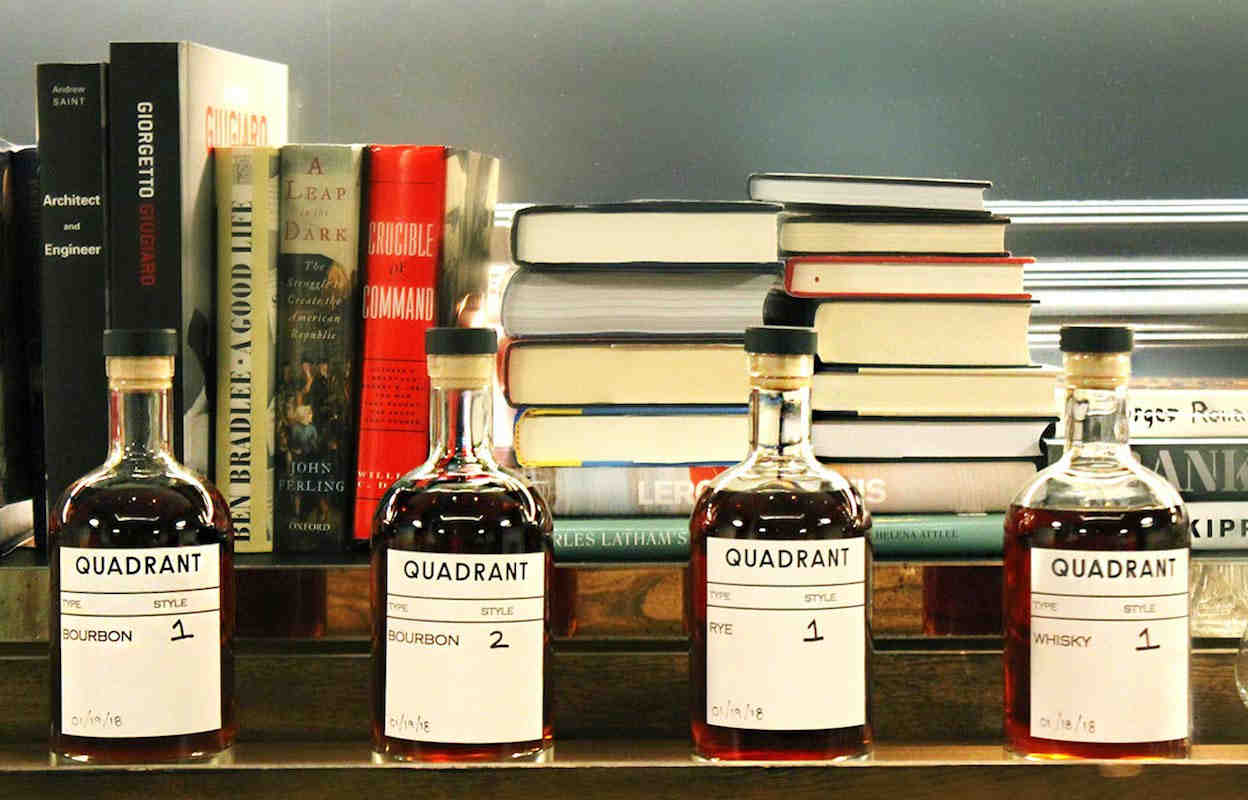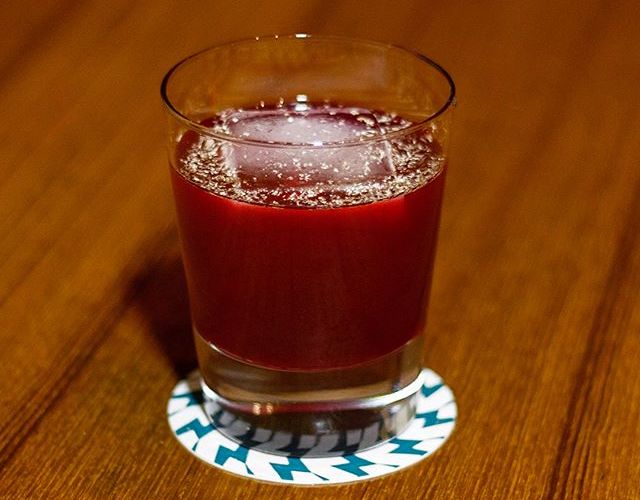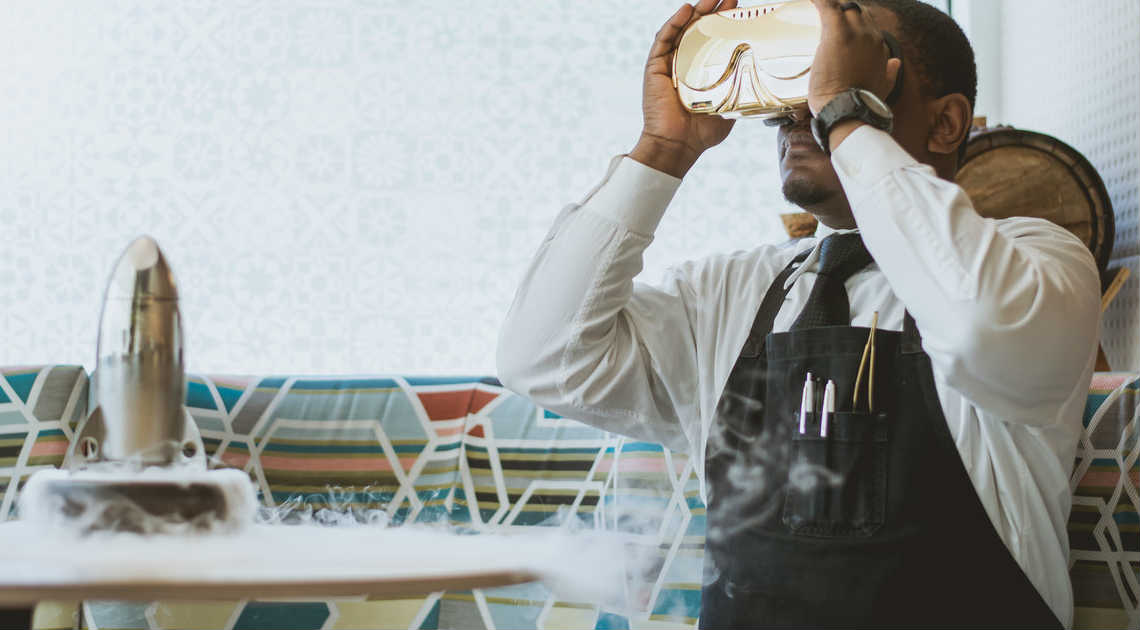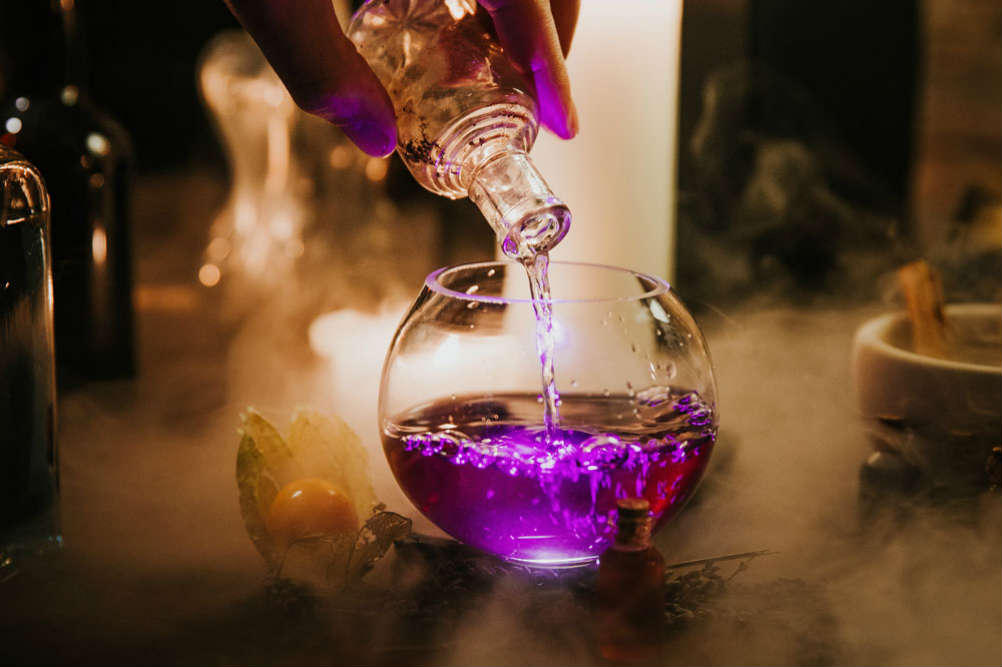Bartending has always been about experimentation. Add a little more vermouth. Try rye instead of bourbon. Taste. Tweak. Tweak again. But it wasn’t until about a decade ago that science really began to encroach on the bartender’s art. At places like Booker & Dax in New York and Barmini in D.C., left-brained bartenders began to deploy centrifuges and specialized acids alongside their Hawthorne strainers and jars of olive brine.
At least at the upper echelons of cocktail-dom, patrons have now come to expect a degree of molecular trickery, be it salt “air” atop their Margarita or drinks served in ice spheres.
Now, a new generation of mixologists is pushing the envelope even further, as the tech trend trickles down to more bars.
“Everyone expects craft cocktails now,” says Christopher Mendenhall, head bartender at Quadrant at the Ritz-Carlton in Washington, D.C. “I think science is the next frontier of everyday bars. What can we do, chemistry-wise?”
For him, the answer lies in an ultrasound machine, an unassuming box that blasts whatever’s inside with as many as 20,000 sound waves per second, rapidly blending any flavors within. He can create gin in about 10 minutes, by exposing vodka and botanicals to the sonic magic.
But after plenty of experimentation, the process really found its legs by “aging” whiskey. Mendenhall’s typical process has him soaking toasted wood chips in wine or another spirit like cognac, adding them to the whiskey, then exposing the mix to sound waves for several hours.
At a demonstration earlier this year, a barrel proof, nine-year-old bourbon became rounder and more mellow with more dark fruit flavors after only 10 minutes in the contraption. Even a white dog gained a nice ruby color and vanilla wood character, dialing back some of the oily corn flavors. You might not want to sip it by itself, but it was eminently usable in cocktails.

Quadrant’s ultrasound-aged whiskeys. Photo: Ritz-Carlton
Ultrasounds and Sous Vide Sazeracs
Before he ever fired up the ultrasound machine, Mendenhall had tinkered with his kitchen’s sous vide machine, in which drinks (or steaks, or carrots, or what have you) are vacuum sealed and submerged in a water bath to simmer low and slow.
And there are no bigger experts in sous vide than the folks at Cuisine Solutions, the food science company that basically put the technique on the map. If you’ve ever had 24-hour braised short ribs, it probably came from them, or at least from techniques and equipment they developed.
Now, they’re trying to do the same for cocktails. “You can do things much more quickly and consistently” with sous vide, says AJ Schaller, a chef consultant for Cuisine Solutions and CREA, the company’s affiliated food-science lab at its U.S. headquarters in Virginia. She says the technique imparts flavor much more quickly, without adding the “cooked” quality that rapid heating would impart.
Take their Sous Vide Smoked Sazerac, in which they vacuum seal rye whiskey, charred maple sugar wood, and grapeseed oil, and simmer it at 70 degrees celsius for two hours.
For Schaller, the neutral oil is the secret weapon for adding smokiness to the final drink, in which the rye is combined with bitters, sugar, and Herbsaint. “We use fat to carry the flavor like perfume,” she says. “The smoke comes through more overtly.”
Cryo-Concentration and Centrifuges
Another trick up her sleeve is cryo-concentration, which she likens to “frozen distillation.” For a pineapple Margarita, they cryo-concentrate pineapple juice through successive rounds of deep freezing, which slowly draws the water content away from the pure pineapple essence. The end result has roughly the same brix as a syrup, while retaining the fruit’s natural acid. They employ the same technique with blood orange juice, which is then blended with rum for a “two-ingredient Daiquiri.”
Of course, not everyone has access to sous vide machines and centrifuges. Which is exactly the point behind The Cauldron, a Harry Potter-esque pop up out of London that debuts in New York this fall. “Whilst the science behind the drinks is great fun, it’s very important to us as a company to keep the customer involved,” wrote co-founder David Duckworth. Upon entering, patrons are issued their own wizard robes and wands (yes, really). They’re then guided through making drinks that, according to Duckworth, “go from liquid to solid right in front of you, potions that melt into themselves (confusing I know), and elixirs that bubble and expand all over the place.”
Take a drink called the Transfiguration Toniq, made with gin, honey, and a blue tea made from the butterfly pea flower. That tea is PH sensitive, so when it’s exposed to ascorbic acid, its molecular structure changes, as does the way light is refracted through the drink, transforming it from blue to pink.

The Hogo A-Go-Go cocktail. Photo: Midnight Rambler.
For drinkers who’d rather dispense with all the Dungeons & Dragons stuff and just have a good cocktail, a more subtle science still finds a home in many ambitious bars. Chad Solomon, one half of the duo behind Midnight Rambler in Dallas, argues that the profession is now “in a post-modernist period,” being that a lot of the techniques from the modernist cuisine movement are now “widely practiced.” What this means is that he avoids “overly intellectualizing the drinks,” and only employs science and tech “when it is essential to accomplish what is needed for the drink.”
For example, when he created a tiki punch called Hogo-A-Go-Go, he says he was “unsatisfied with commercial falernum and wanted something much more bright and expressive as well as clean and linear. To achieve this I employ a vacuum machine to extract lime essential oil into sugar to make a lime oleo saccharum.” He then combines Jamaican rum with West Indian bay leaf, ginger, clove, and nutmeg in a sous vide bath. “I use a refractometer to dilute the lime oleo to 66° brix with mineral water. I then combine the lime oleo with the aromatized Jamaican rum, and add a bitter almond essence to complete the falernum.”
What’s Next?
When I ask what the next frontier is of science behind the bar, he’s got a better answer ready than I expected: “Our understanding of the brain and the way it processes each of the senses such as smell, taste, sight, hearing, and touch to perceive flavor and aroma.” He even name drops Charles Spence, who heads something called the Crossmodal Research Laboratory at Oxford University, looking into “how a better understanding of the human mind will lead to better multisensory food and drink experiences.”
Speaking of multisensory, at Jose Andres’s Barmini in D.C., your drink may soon come with a virtual-reality headset on the side.

The Apollo cocktail experience at Barmini. Photo: Jenny Dorsey.
At Andres’s boozy offshoot of Minibar, his temple to molecular gastronomy, approaches like steam distilling and evaporating are old hat, and passionfruit air atop your Old-Fashioned is about the least surprising thing you’ll see. So head bartender Al Thompson is looking to tech things up in other areas, like presentation.
He and his team recently unveiled the Apollo, a Moscow Mule variation with honey vodka and St. Germain. That by itself is not remarkable. What is remarkable is the virtual-reality headset they put over guests’ eyes. While their drink is being made, guests watch a VR rocket launch. When they take off the goggles, the drink is in front of them, in a rocket-shaped serving vessel.
“It’s not just about what’s in the glass,” Thompson says. “It’s how we get there and how to tell a story.”



